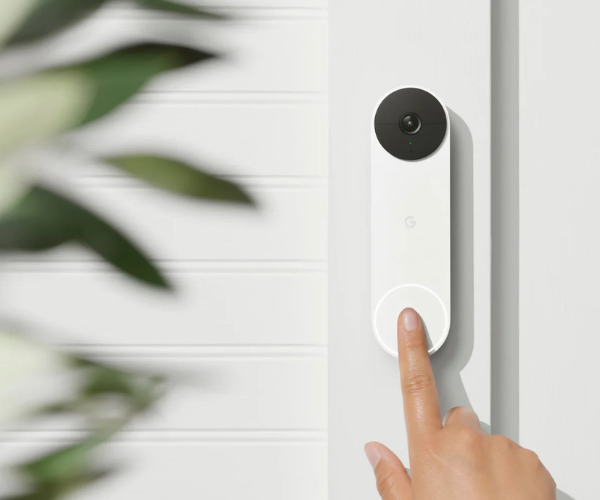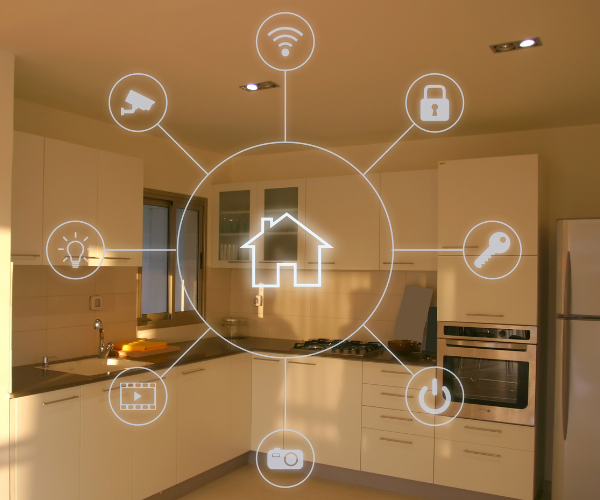 Free delivery on orders over £75 ex VAT
Free delivery on orders over £75 ex VAT Free click & collect from branches nationwide
Free click & collect from branches nationwideCarbon Monoxide alarms are an important, often overlooked device that detects the presence of carbon monoxide gas in properties and office buildings to prevent carbon monoxide poisoning.
Carbon Monoxide detectors were first brought to the market in the late 1990s, and have remained a crucial piece of kit that will detect any signs of carbon monoxide present in your home that could leak from appliances such as boilers, water heaters, fireplaces and much more. The detector will emit a loud siren warning you of a leak.
Our safety experts have compiled this handy FAQ to answer some of the most popular questions regarding Carbon Monoxide alarms, such as the best device you can purchase, why carbon monoxide is dangerous and what to do if your detector beeps.
Which Carbon Monoxide Alarm is Best?
There are many excellent carbon monoxide alarms on the market that come with various different features, so it can take time to choose the best one for your needs.
The Google Nest Protect carbon monoxide alarm, is a popular choice and can connect to your Wi-Fi network to enable a wide range of smart features and functionality. It also has an inbuilt smoke detector and voice assistant, making it one of the most advanced CO2 detectors on the market.
Another CO2 alarm, the Hispec Battery Operated Carbon Monoxide Alarm, takes a more simplified approach. It forgoes any smart features in favour of long-life, reliability, and it’s ability toprovide early carbon detection.
Why is Carbon Monoxide Dangerous?
Carbon monoxide emits a colourless and odourless gas that is produced by the insufficient combustion of fuel. It's very hazardous because it can displace oxygen in the blood, leading to a condition known as carbon monoxide poisoning.
The symptoms of carbon monoxide poisoning can alter depending on the level of exposure, but symptoms could include - headaches, vomiting, dizziness, loss of consciousness or even death.
Even the slightest exposure to high levels of carbon monoxide can be fatal. Carbon monoxide poisoning can also render long-term health problems like heart and brain damage.
What Carbon Monoxide Levels are Dangerous?
Carbon monoxide levels are dangerous when levels exceed 10 parts per million (ppm). When carbon monoxide levels reach this level, some people may experience headaches, fatigue, and nausea. If the levels continue to rise, symptoms can become more severe, leading to dizziness, confusion, and loss of consciousness.
This could be fatal if CO levels continue to increase to 400 ppm. The following is a general guide to the levels of carbon monoxide that are considered dangerous:
- 10 ppm: This is the level at which some individuals may experience symptoms.
- 70 ppm: This is the level at which most people will begin to experience symptoms.
- 150 ppm: This is the level at which disorientation and unconsciousness can occur.
- 400 ppm: This is the level at which death can occur.
Here are some good practices you can follow to prevent carbon monoxide poisoning:
- Have heating and cooling appliances inspected and serviced regularly.
- Install a carbon monoxide detector, ideally five feet above the floor and test monthly.
- Avoid using generators, grills, or other fuel-burning appliances indoors or in enclosed spaces.
- If you suspect you have been exposed to carbon monoxide, get fresh air immediately.

What Would Happen if I Inhaled Carbon Monoxide?
If you suspect that you have breathed in carbon monoxide, you may be in danger of carbon monoxide poisoning, depending on your vulnerability. Carbon monoxide poisoning occurs when carbon monoxide mixes and binds with haemoglobin in the blood to form carboxyhemoglobin, resulting in less oxygen getting transported to the tissues in the body and vital organs such as the brain and heart.
For your safety, it's crucial to avoid using appliances like boilers, cookers, or heaters if possible. Circulate the area by opening windows and entrances to let in fresh air. Seek medical attention immediately, and only return to the property or building once you receive further guidance.
Can Carbon Monoxide Poisoning be Cured?
Yes, fortunately, early treatment can cure carbon monoxide poisoning. One effective method is providing the affected person with 100% oxygen, which helps remove the carbon monoxide from the blood and promotes recovery.
Treating carbon monoxide poisoning as soon as possible is crucial for a better chance of full recovery. While some long-term effects like headaches, fatigue, and difficulty concentrating are possible, the condition can be fatal in some cases, especially when exposed to high levels of carbon monoxide for a prolonged period.
Will a Carbon Monoxide Alarm Detect a Gas Leak?
Unfortunately, a carbon monoxide alarm will not detect a gas leak. Carbon monoxide alarms are designed to detect carbon, whereas, on the other hand, gas leaks are caused by the release of flammable gases, such as natural gas, propane, or methane.
There are detectors available that can detect both carbon monoxide and gas leaks that typically will have two sensors, one for carbon monoxide and one for flammable gases, which will set off an early detection of dangerous gas levels.

Where Should a Carbon Monoxide Detector be Installed?
For maximum safety, installing a carbon monoxide detector on every floor of your home is advisable. It is also best to place it in the same room where fuel-burning appliances like boilers, stoves, or ovens are located.
The placement of your carbon detector is pivotal as it's recommended to be at head height because carbon monoxide is lighter than gravity, so it will rise upwards towards the ceiling, allowing for early detection from the alarm. You could also place a detector on a shelf or bookcase if you cannot fix it to the wall.
Are Carbon Monoxide Detectors Required by Law?
In the UK, it is mandatory by law for all landlords to install carbon monoxide alarms in any room used for living accommodation that has a fixed combustion appliance. These regulations were first introduced in 2015 and were further amended in 2022. Landlords are also required to regularly test and maintain these alarms.
How does Carbon Monoxide Affect the Environment?
Carbon monoxide is a significant air pollutant with several adverse environmental effects. CO2 can react with other contaminants in the atmosphere to form ozone, a harmful gas that can potentially lead to respiratory issues.
While carbon monoxide only contributes 1% towards global warming, there are some additional environmental effects that carbon monoxide can have, such as:
- Ozone formation: When CO2 combines with other pollutants like nitrogen oxide and volatile organic compounds in the atmosphere, it creates ozone. This dangerous gas can result in respiratory issues and harm plants.
- Smog formation: In addition to other pollutants, CO2 can also contribute to the appearance of smog, which is a harmful mixture that reduces visibility and irritates the eyes, nose, and throat. This is a significant issue in numerous urban areas globally.
- Climate change: As previously stated, carbon monoxide is only responsible for 1% of global warming as a greenhouse gas. However, over time this can increase global temperatures and the trapping of heat in the atmosphere.
Can Carbon Monoxide Detectors be Used in Tents?
There is actually a portable carbon monoxide detector, the FireHawk Carbon alarm that is specifically designed for camping but can also be used in properties. They work by monitoring the concentration of carbon monoxide gas in the air and function by using:
- Biomimetic sensor: This is a colour-changing gel that sets off an alarm when pre-set carbon monoxide levels have been reached.
- Metal oxide semiconductor: This is an electric circuit that is used to monitor the presence of carbon monoxide.
- Electrochemical sensor: An electrode is used to monitor changes in electrical currents caused by increasing levels of carbon monoxide.

City Plumbing is a market leader for providing homeowners and their installers with market-leading carbon monoxide equipment.
View our great range of competitively priced Carbon Monoxide Alarms with quick delivery or collection from your local branch.
If you require further information, contact one of our experts, who can support homeowners and installers alike in make sustainable safety changes to homes across the country.
Other articles

How you can Benefit with a Smart Doorbell
24 Aug 2023 ・ 6 mins

5 Benefits of Smart Home Technology
17 Aug 2023 ・ 5 mins

EV Chargers FAQs - Your Common Questions Answered
05 Jul 2023 ・ 6 mins

5 Myths About Smart Homes Answered
13 Jun 2023 ・ 5 mins

